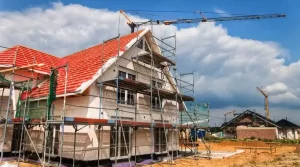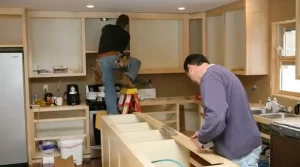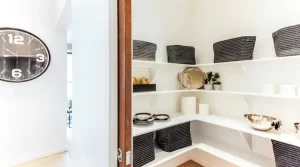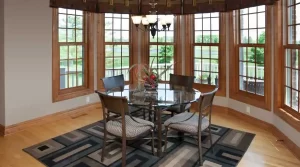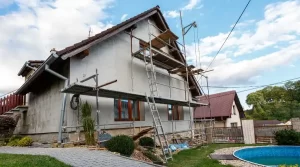You may have to choose between using solid beams or box beams (also known as wrapped beams) in some feature spaces if you intend to create a custom home in the future. Before making this choice, you should take into account the following factors.
Aesthetic
You can choose between a clean-lined, more transitional aesthetic and a rustic, antiqued effect when using solid beams. The absence of any seams is one of the main benefits of employing solid beams in areas that require very long beams. Creating box beams requires a trim carpenter or timber/beam manufacturer to assemble boards that are normally only available in lengths between 14′ and 16′. Even though an expert carpenter and painter can effectively conceal the seam by matching the grain and staining it, if you look closely, the seam is typically still discernible. But if you’re working with a skilled, high-quality maker or carpenter, the mitered edge seams should be fully concealed.
Generally speaking, box beams work better in designs that are more streamlined and transitional. Since you don’t have to match the graining and can select a more reasonably priced wood species, they are also the beam of choice when you’d prefer the finished beam to be painted rather than stained. The cost-savings of using box beams versus solid beams for an aged, hand-hewn appearance are typically negligible. Those who desire beams with an antique appearance typically choose solid when constructing or building a custom home from scratch.
Application
Because the old structure was not built to sustain the additional weight of solid timbers, solid beams are frequently not an option in repairs or remodel. Due to the fact that box beams are simply aesthetic and never structural, they can be used in the majority of rehabilitation projects. On the other hand, solid beams could be purely aesthetic or functional. The solid timber variety best renowned for its tensile strength is Douglas Fir. Box beams can be custom-milled to match solid beams in situations where they are utilized to encase structural elements like a steel I-beam or Glulam. Also, this is helpful if a specific beam needs to conceal plumbing or electrical chases.
Box beams should only be used for interior purposes, especially in humid climates (like Houston, Texas), whereas solid beams can be utilized both indoors and outdoors. Box beams’ ends and edges may expand, cup, or separate as a result of temperature and moisture variations in Houston’s humid climate.
Price
In terms of interior ornamental beams, painted box beams is the most cost-effective option. If you’d prefer stained, you can still save money by using box beams by an experienced trim carpenter, but be sure to check with your custom builder to be sure they have a lot of experience mitering edges and effectively masking seams. Although solid hardwoods are one of the priciest options for beams, they are your best bet if you’re going for a rustic, tarnished look.
Speaking with your architect, interior designer, and custom builder is the best course of action when deciding between solid beams and box beams for your custom house. Your custom builder will be able to provide you with information on the cost and availability of solid timbers, wrapped beam planking, and the ability of their trim carpenters to create a solid beam “appearance” in a box beam application. As is frequently the case, your chosen custom builder should be a reliable resource, advisor, and advocate for you and your family throughout this process.



